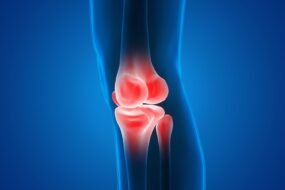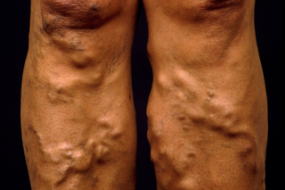
Colorectal carcinoma is a malignancy of the colon and rectum. CRC is a leading cause of death.
Adenoma-Carcinoma-Sequence is the most common way CRC arises: where an adenomatous polyp is an intermediate step.
Incidence in terms of location from proximal to distal;
- Caecum 12%
- Ascending colon 5 %
- Transverse colon 5.5 %
- Descending colon 4%
- Sigmoid colon 21%
- Rectum 38 %
Risk factors
- Age
- Male sex
- Family History of CRC
- Polyps and adenomas
- Sedentary lifestyle and Obesity
- History of abdominal radiation in childhood
- Inflammatory Bowel Disease (IBD)
- Hereditary Syndromes, e.g., familial adenomatous polyposis (FAP), which has a lifetime risk of 100%, Hereditary non-polyposis colorectal cancer
- Diet; red meat, alcohol, smoking, refined carbohydrates, and animal fat.
Clinical presentation
Clinical presentation varies depending on whether the cancer is left-sided or right-sided;
Right-sided
- Right-sided abdominal pain
- Unexplained iron deficiency anemia
- Melena stool
- Weight loss
- Nausea and vomiting
- Diarrhea
- Anorexia
- Appendicitis
Left-sided
- Iron deficiency anemia
- Hematochezia
- Change in bowel habits and flatulence
- Lower bowel obstruction
- Tenesmus
- Stool incontinence
Constitutional symptoms
- Night sweats
- Fatigue
- Fever
Signs of metastasis, e.g., hemoptysis, cough
Investigations
- Full hemogram – anemia
- Liver function tests – deranged if there is metastasis.
- Barium enema – apple core appearance
- A colonoscopy with biopsy – confirms the diagnosis and shows the differentiation of the tumor.
- CT scan of the abdomen, pelvis, and chest- staging
- Carcinoembryonic antigen (CEA) – assess response to treatment.
- Renal function tests as you prepare for treatment.
Differential diagnosis
- Hemorrhoids
- Anal fissures
- IBD
- Diverticulitis
- Bowel ischemia
- Carcinoid tumors
Staging-TNM system
- T =Tumor stage
T1= into submucosa
T2= into muscularis propria
T3= into pericolic fat or subserosa but not breaching serosa
T4= Breaching serosa or directly involving another organ
- N =Nodal stage
N0=No nodes involved
N1= 1-3 nodes involved
N2 =4 or more nodes involved
- M= Metastases
M0 =No metastases
M1= Metastases
CRC usually Metastasize via;
- Blood to liver, lung, brain, and bones.
- Direct spread to abdominal wall, vessels, kidney, bladder, and uterus
- Lymphatics to lymph nodes.
Management
- Surgery
- It is the only curative treatment, especially for early-stage cancers.
- is the mainstay of treatment of rectal cancer
- Monitor for post-operative bleeding
- Resection of liver metastasis can also be done.
- Radiotherapy
- It decreases local recurrence of rectal cancer.
- Rarely used for colon cancer since bowels are very sensitive
- Used for bone metastasis to reduce pain
- Chemotherapy
- Neo-adjuvant for lung metastasis
- Post-operatively
- Palliative
- Management of metastasis
- Radiofrequency ablation for small tumors.
- Trans-arterial embolization for big tumors
- Hyperthermic intra-operative intraperitoneal chemotherapy for peritoneal metastasis.
- Targeted drug therapy
Prevention
- Diet; dietary fiber, vegetables, vitamins, and fruits.
- exercise
- Screening for all adults aged 50 years or older via;
- Annual Fecal occult blood test (FOBT) or fecal immunochemical testing (FIT).
- Colonoscopy every 10 years
- Flexible sigmoidoscopy every 5 years
- Double-contrast barium enema every 5–10 years
- CT colonography every 5 years
- Prophylactic surgery for patients with FAP
- Use of NSAIDs, e.g., aspirin
Complications
- Bleeding and iron deficiency anemia
- Metastasis
- Ascites
- Intestinal obstruction
- Ileus
- Anal Fistula
- Recurrence
- Intestinal perforation
- Peritonitis and sepsis












